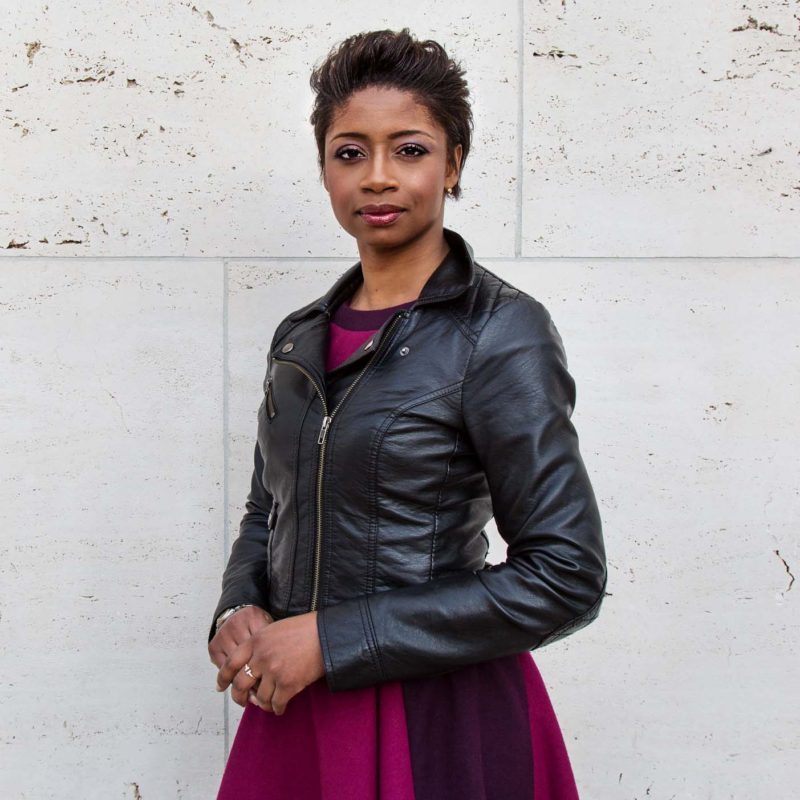An Interview with Montego Glover
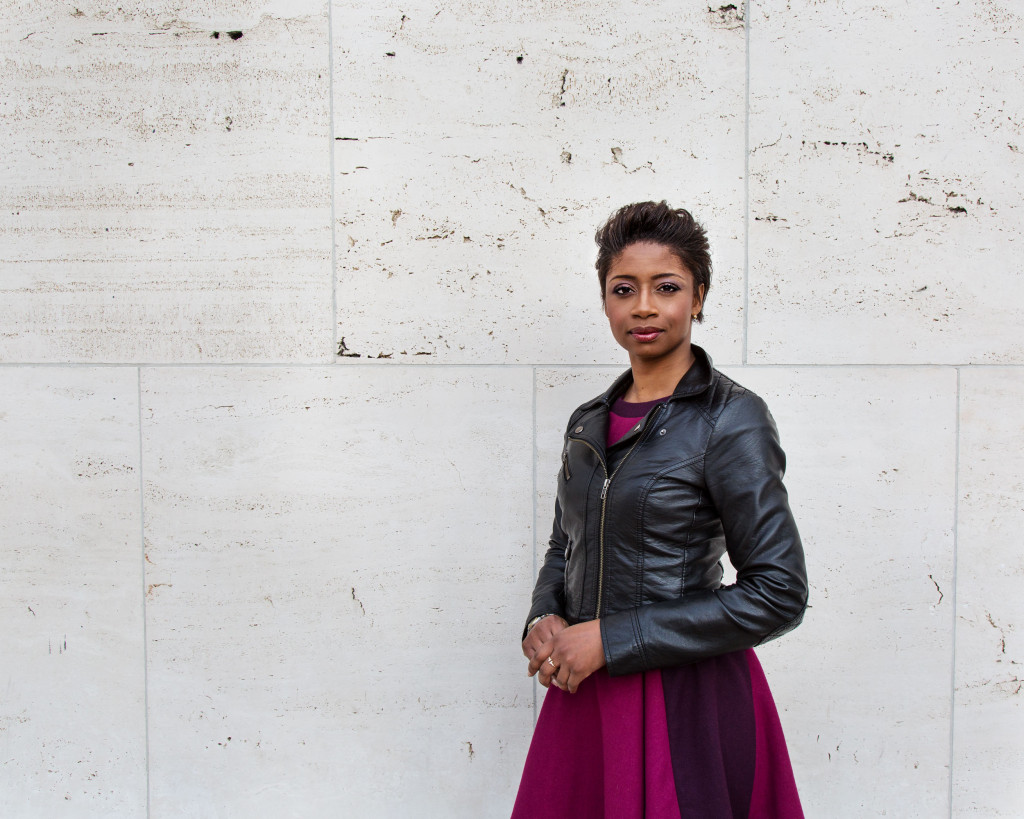
Written by Victoria Myers
Photography by Emma Pratte
April 12th,2016
Montego Glover has just come from performing in a student matinee of The Royale. The new play by Marco Ramirez, currently playing at Lincoln Center Theater, tells the story of an African-American champion boxer who, in 1905, wants to break racial barriers and have a match with the leading white boxer to become the heavyweight champion of the country. Montego plays his sister, which sounds like one thing on paper, but is quite another in this particular play, with her particular performance. Last season, Montego was seen on Broadway in both Les Misérables and It Shoulda Been You (that’s right, she followed up doing a comedy with one of musical theatre’s most famous death scenes). Prior to that, she received a Tony nomination for Best Leading Actress in a Musical for her work in Memphis. Before heading back to Lincoln Center for an evening performance of The Royale, we talked to Montego about her process, how she shapes her characters, what inspires her, and much more.

What’s your acting process like? When you see a character on the page, what’s your way in?
The way in, first and foremost, is through the words. I really like to take in what a playwright has chosen to put on a page—how much language, how little language, what words are used to express thoughts, and what’s the cadence of the speech. That’s where I begin. From there, it’s about hearing that language in my own voice, and that voice really morphing into the sound of the character. Then it finds its way into my body.
Do you look for characters that you immediately identify with or do you gravitate towards the ones where you think, “I have no idea how I’m going to do that”?
The good news, I feel, is that I have yet to meet a character that I didn’t have something in common with, even if on the surface we appear to have nothing in common. So I look for women—I’ve yet to play a man, but I’m sure it’s on its way—who have a story to tell, who I find interesting and compelling, since that’s the hook into wanting to tell the story. So interesting, compelling, heartfelt stories is really what I’m after.
I’m assuming you’re an actor who comes into rehearsal with a lot of work that you’ve done at home. How do you balance that with the rehearsal process?
The thing with the information I gather, or the research I do on a piece, is that it’s all meant to be changeable and cut-able. It serves as the bed. Nothing is hard and fast, or something I’m married to and can’t give up. After all, once I meet the rest of the company and the director and the set designer and the costume designer, all of the ideas from those artists inform the work that I’m doing. So what I really walk into the rehearsal hall with is a living, breathing, changeable shell that I can morph and shape into anything it needs to be. That’s how you don’t get hung up on preconceived ideas and you don’t get stuck in the creative process. As long as you’re willing to be fluid and willing to move, then anything is possible. And the stuff that I come in with is really meant to give me a sense of perspective and something to contribute, because I assume that the other actors are coming into the room with an equal amount of information. So I want to have something to bring to the table as well.

Did you do research as part of your process for The Royale?
Yes. I was very interested in the look of women at the turn of the last century—their bearing, their demeanor, their fashion. This is a play about boxing and a boxer, so were women present at boxing matches? And if they were, where were they seated at boxing matches? Nowadays if there’s a huge boxing match and they pan out to the audience, you see women in the front row and sweat is hitting them in the face. But I had this idea that maybe it grew into that, and that one hundred years ago maybe it [her presence at a match] was a story. And particularly for women of color and how they were treated at sporting events, since [that theme] is so relevant to The Royale.
The Royale has a very specific physical language. Where did that enter into your process?
It started on the page. The playwright [Marco Ramirez] has written in some wonderful, rhythmic passages in the play, and so they’re hard to ignore and are very much part of the character. I wanted to make sure that I was very much adhering to those things as I was putting my character together.
The play has a surprising conceptual twist at the end that concerns your character. One of the things that I thought was interesting about it is that it uses perspective. How do you, as an actor, approach doing a scene where, in a way, half of what you’re playing is almost coming from the other character’s imagination?
It’s not nearly as complex as it seems, although the end result is quite complex. But I think that complexity is because of the simplicity. If I pick up a piece of paper shaped like a circle and say, “This is the moon,” then you believe me. That’s the moon. It’s really that. I’m assigning this idea to a person and now allowing this person to be the body and the speech and the action of that entity.
That’s so fascinating since I would have expected, “We worked on that endlessly in rehearsal,” but it’s more about pulling back and going in a simple direction.
Yeah, much simpler, because the larger ideas are very complex—what this fighter is hoping for, what he’s trying to accomplish, what the people in his life have tried to do in terms of supporting him and showing him all the different ways to accomplish his dream. We want to make sure we gather all of that as we move to the final scene of the play. In table work, when I sat down with that scene, I did some very simple things like highlight here for thoughts that are angry, here for thoughts that are sad. Just so I could even see on the page the different colors of the character. That’s important. Because at some point you won’t have the script in front of you. It will all need to be in your body.
I think we managed to do that without giving anything away, which is good, since I was genuinely surprised by the last scene of the play.
I think what we’re telling is a very human story. An elite athlete who is going after his dream and it’s the big meet. Everyone knows that journey. And our hero is on a journey, and you watch him go up the mountain and up the mountain with a lot of demons and pitfalls and humor along the way. So I appreciate that because what we’ve got in The Royale is a human story told through a specific lens that everyone identifies with on a certain level.
Right, it’s not really about boxing.
Yeah, it’s a play about boxing that’s not really about boxing.
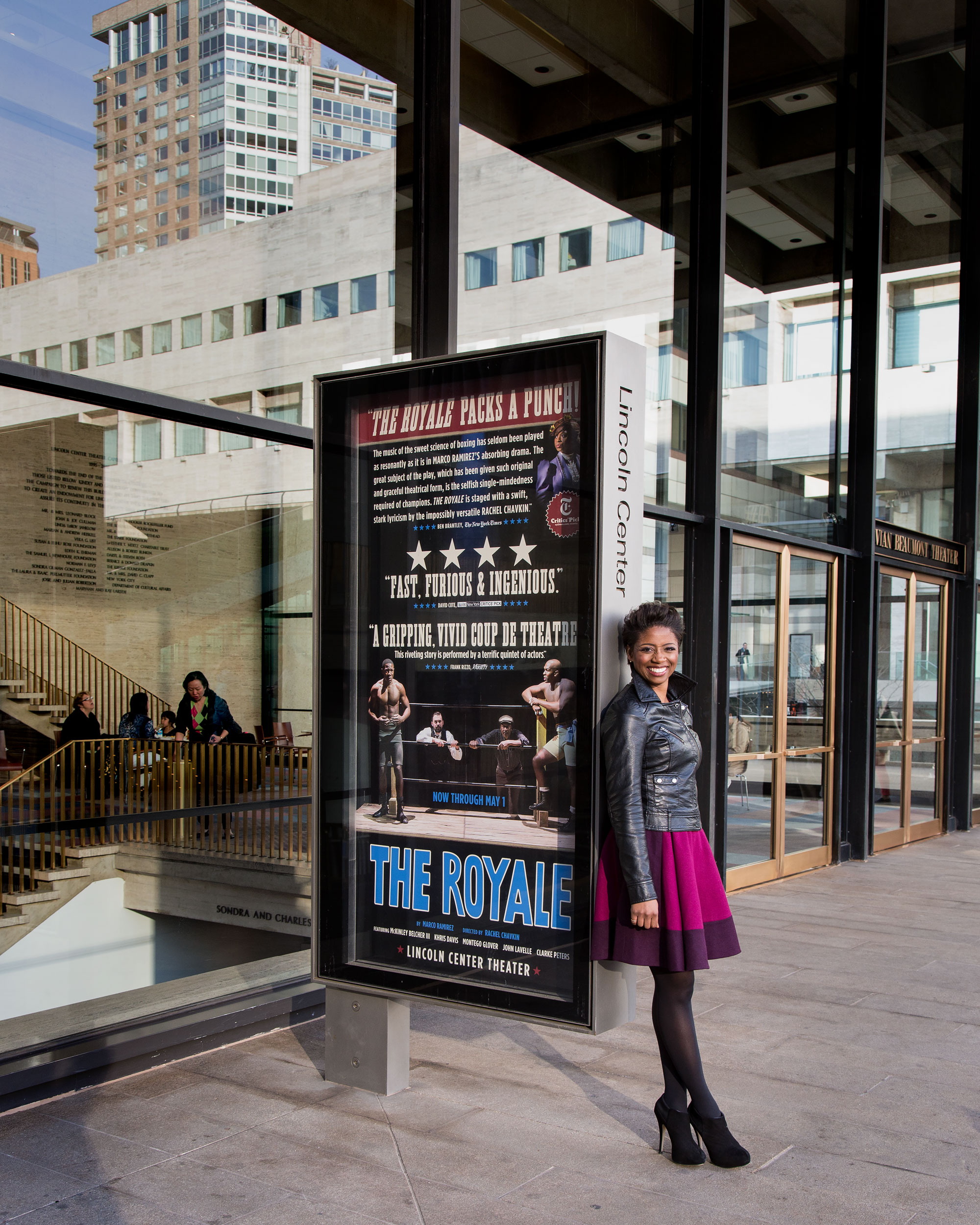

You’re the only woman in the cast.
I’m alone in the boy wilderness, yes.
What’s that like?
It’s actually really great. It’s not always easy to be the only girl. And we’re a small company—only five actors. When you outnumber someone, it’s easy to close ranks and leave someone out, but the guys are terrific. In addition to being really terrific men they’re very gracious actors, very open, very willing and participatory and very silly. And they recognize my role in the show as I recognize theirs. So there’s a wonderful mutual respect, admiration, and also collaboration. It’s been great to work with them and, sincerely, they are all tremendously gifted.
And it must make it different, again, with that twist at the end. Adding a whole other dynamic there.
I say often that the consciousness of the play elevates. We’re climbing the mountain, climbing the mountain, and it’s like, “Wow, here’s the vista.”

One thing that comes up sometimes with directors is the idea of point of view in theatre, and how people think about perspective very differently in theatre than in film. This almost has a cinematic quality.
Yes, and that’s our director Rachel Chavkin. She’s terrifically talented and so visual. She paints glorious pictures with bodies, and has always done that. I absolutely love her. It’s not surprising to me that the look of the play is so strong and the storytelling is as much in that as the words.
The play also has themes that have a lot of contemporary resonance to them. Is that something you talked about in rehearsal and how much to pull those out?
It’s surprising how timely this play set in 1910 is. We absolutely talked about it in rehearsal, and its relevance to a number of issues going on right now. And the larger issue, which is, this is a struggle that has always been and may always be, so how does it apply in this specific situation? What elements come together to further inform how we can improve, or show us where we have made some very serious mistakes as a group or individually? That’s very definitely one of the themes of the play.

Before this you were doing a new musical, and now a new play. Musicals and plays are developed differently. Do you find there are things you take from one world and apply them to developing a piece in the other?
My point of view is that it’s the same instrument—same two arms, two legs, same brain—so I think it’s all transferable. People say to me all the time, “You’re doing this play and you just played Fantine in Les Mis, isn’t it weird that you’re not singing?” And I’m like, “No. I’m still using my voice. I have to talk, you know.” So it’s not odd to me. It would be odd if I wasn’t speaking at all. There’s a musicality to this language that I’d use if I was working on a musical. There’s a very clear definition of storytelling that is present. The thing is every piece, whether it’s a musical or play, has musicality and has essentially the same elements. A musical has choreography, our play has blocking. It’s kind of the same.
You’ve done a lot of concert work too. I’d think that would add a whole other layer to your process since it’s another way of learning how the audience listens.
What’s wonderful is it’s another opportunity to continue to story tell, but strictly through music, in a concert form. One of the most thrilling things about concerts is getting to sing with a symphony or philharmonic. There’s nothing like the sound of 40 to 100 musicians behind you making stunning music that you get to sing to. And what’s great is that the script and the blocking is just the music, and you get to infuse every pause, every breath, with all of those entities with the help of the orchestra. That’s a different texture, a different bed of sound—a different world of the play.
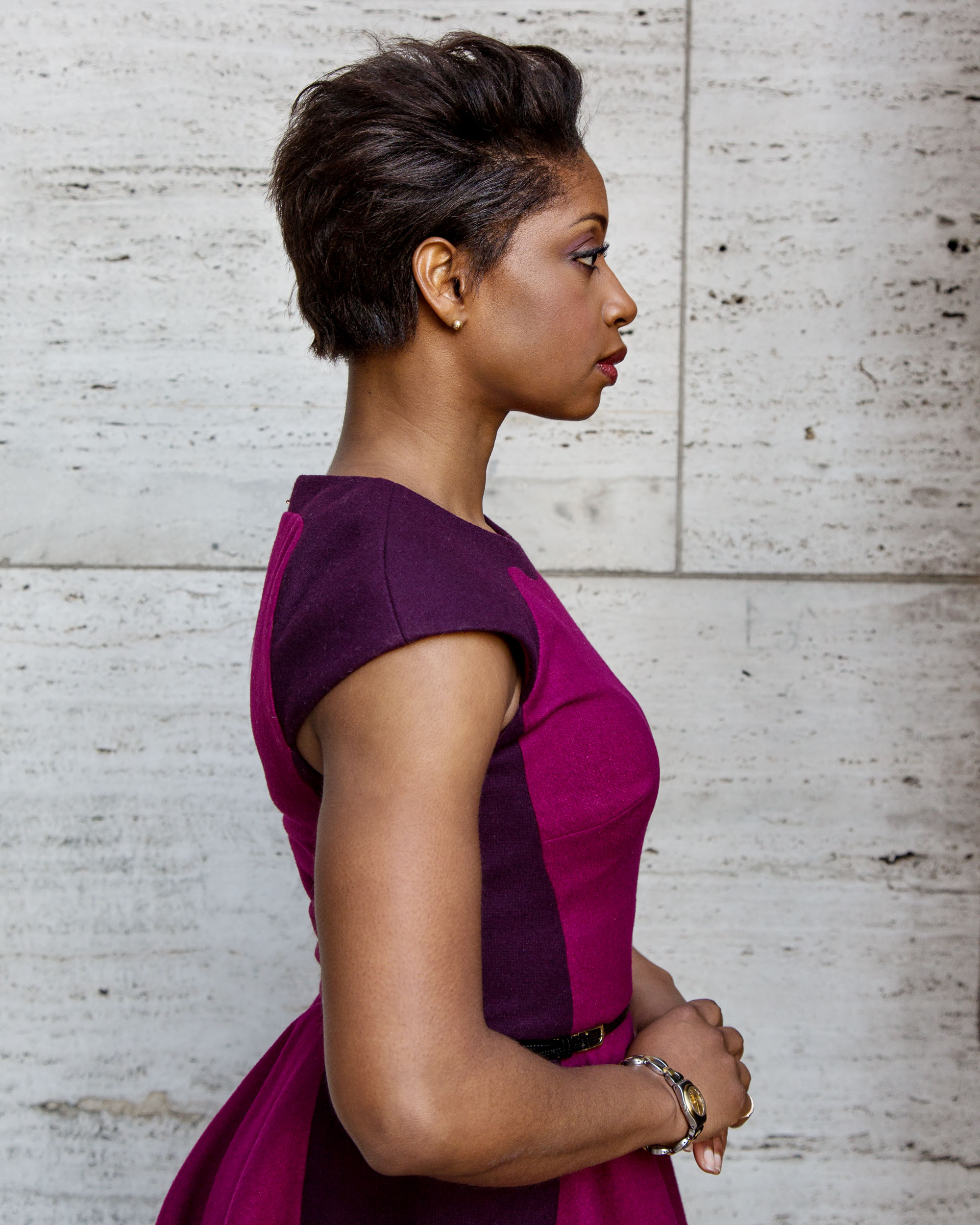

Are you visual?
Yes. Visual and physical.
Can you immediately see things when you read them?
Mostly. But sometimes I get stuck and go, “I don’t know what that is. I’m going to wait for more information from my scene partner.” Or more information from the director. But what comes up first is the voice of the character. Only because I’m reading and hearing my own voice become the voice of the character. But, yes, very visual. I see things almost immediately.
Do you see music?
Sometimes. It depends.
Do you see colors?
Sometimes, yes. And sometimes it’s a surprise. It doesn’t always happen, but when it does it’s like, “Oh wow. And this is an orange or a purple.”

Do you see any themes in your work?
I’m very privileged to play women with really compelling stories, and they run the gamut, which I’m pleased to say. Women who love deeply, love fiercely, are willing to fight for what they believe in—willing to die for it in some cases. Women who are dreamers—who reach, who leap, who dive off into the abyss. Women with humor. Women with a great deal of emotional depth. And heart. Women who are feelers, and by that I mean who can wear on their skin or internalize what’s going on around them. Very present women with a lot at stake.
One thing that comes up a lot in interviews is people wanting there to be more parts for women that are nuanced and have all of the traits you just mentioned.
I think that’s present. In current works, classic works, and works to come. I have never had trouble finding those nuances. I think some scripts, some plays, some pieces of music are meatier or juicier than others, but even with things that are rather thin, all you need is one spark. It only takes a grain of sand to make a pearl. You can make a universe out of that. And I don’t mean making a mountain out of a molehill. It’s there, you can see it. And that’s my job. A playwright can only write so much. A musician can only write so much. It has to come off the page and that’s part of my job.

Other than playwrights, who are your favorite writers?
Poets. I love Eliot. Maya Angelou. I love Nikki Giovanni. I love the classics, and I love the contemporary writers. I’m an artist who really appreciates and understands and was trained in the classics. It’s like you can’t really be a dancer unless you’ve been near a ballet class—you can’t really get there—I feel the same way about the classics in theatre. And then I happen to be one of those lucky kids born and raised in the modern age. So works about contemporary life—this century or the last century—it’s all fairly modern. If you think about what’s happened in the last hundred years in the world and the country, it’s like, “Wow, it wasn’t that long ago.” It wasn’t that long ago that television didn’t exist or the first Model T was rolling out of the Ford factory. And artists who have the courage to write about things that are difficult, but also the courage to write about things that are truly simple to bring us back around. I think sometimes our self-talk and thinking get a little extreme—there’s so much coming at us and so many ways to reach past yourself—it’s nice to just take in the sky, look up, and see what’s up there.
Do you have a dream cultural collaboration?
I am such a fan of the Alvin Ailey Dance Theatre. I see them every season. I would love to see them dance with a full orchestra. I’m sure it’s happened, but I haven’t seen it and I would like to.
There’s not as much cross-cultural dialogue between the arts as one might think in New York.
Not as much as you might think. But I feel like as New Yorkers, we take the cross-cultural dialogue for granted. Most people come to a Broadway show and are like, “Whoa! People are acting and singing and dancing at the same time.” And the set and the lights. When you think about it, it’s actually exactly what you just said, only it’s Broadway and it’s been around a million years and people do it eight times a week in forty different theatres every single week. It’s extraordinary.
What was the first piece of storytelling that had a major impact on you?
I grew up watching public television and watching the arts on public television, and it was one of my first introductions to the arts. I remember hearing opera for the first time and being like, “What is this?” It was just singing and singing and singing. I’d never heard voices make that sound naturally before, and it was really transformative and gorgeous. And opportunities to watch symphonies playing or philharmonics, and watching people play instruments and make sounds I’d only heard in recordings. Watching it and listening to it at the same time was fascinating to me, and I’d sit there for hours and take it in. It was otherworldly to me, and I mean that in the best possible way.
I always wish I knew more about opera, and I know next to nothing.
I think that’s true for a lot of people, but kind of okay if you’re drawn to it in some way and willing to explore that, because in some ways it is such an ancient art form. It was really one of the first besides movement and dance. It’s an aural experience.
The music functions so differently than in musical theatre.
I think that’s why the experience of it is different. You don’t have to be any less affected, but the act of taking it in is different. There are times in opera when you can close your eyes and just listen, but in musical theatre, don’t or you’re going to miss something.
Who were your heroes growing up?
Wonder Woman. The Super Friends. All of them. Phylicia Rashad, because she was Mrs. Huxtable on The Cosby Show. And my first acting teacher. I started studying when I was twelve years old, and she knew everything and she taught everything to her students fearlessly—boldly and fearlessly.
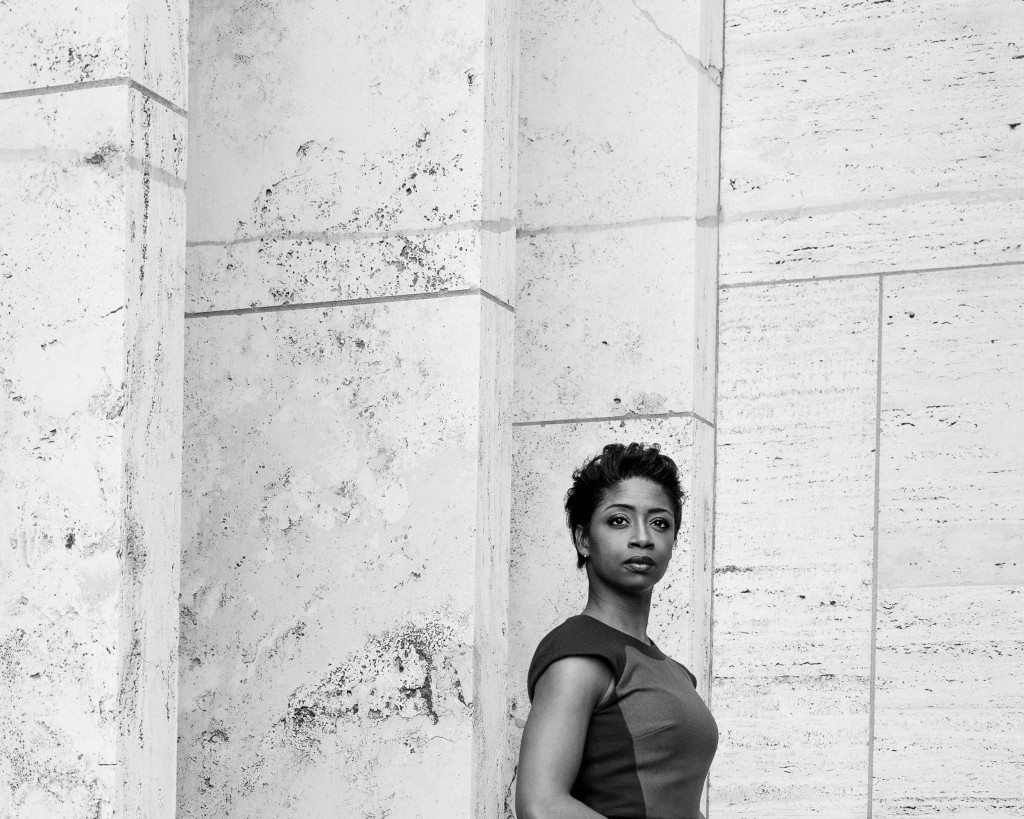

A theme with actors in interviews has been discussing their development, and how the professional and personal intersect. Actors have so many people telling them who they are. How does that affect you as a developing artist?
You know what’s interesting about that? I have found that if you ask everybody who they think you are and what they think your type is and where they think you fit, they will happily tell you. And many times they’re wrong. What I discovered—and I didn’t have to fall into the hole to discover this—is I wasn’t asking. I knew why I wanted to tell stories, I knew why I went to acting school, I knew what it did for me internally. So I wasn’t asking those questions. I was going after the work. In school, I was going after the acting education. Once I was out of school, I was going after the job. “Do you want to do a production of Oklahoma?” “Yes, I do.” I wasn’t thinking, who should I play or what would I play, or asking anyone that. I was saying, “I would like to play Ado Annie.” “I would like to play Laurie.” I just like the story and what it’s telling. And that’s served me well. And I don’t pooh-pooh anyone who wants to ask for advice or take in helpful information from their community. I have done that among my teachers and friends. But certainly not handing your artist’s heart to someone else to inform you. I’ve always felt informed, even if I had more to learn. “Have you done the work?” That’s what I always say to myself. You can’t pull anyone else into the conversation, into the growth pattern you’re trying to establish, if you haven’t done the work. And I always find myself thinking, “Yeah, I’ve done the work, but I could do more.” I make that the focus. I think it’s kept me sane.

How do you think we can improve gender equality in theatre?
Here’s what I know. People, any person, want to see themselves reflected in art. So, the first thing is to be sure that stories for women and about women are being told, and that a feminine presence is being included in the writing and the selection of offerings for a season. And then putting women in those positions. And, as artists, being willing to take those positions. If someone came to me tomorrow and said, “I’ve been thinking about a production of A Midsummer Night’s Dream and I’d love for you to play Puck, would you consider that?” I have two options. I can go, “I’ve never done that before, I don’t know if I can, so the answer is no,” or, “I’ve never done that before, it feels terrifying and awesome, and the answer is yes.” There are two forces at work here: the inclusion, welcoming in, and then leaping, running toward the thing you want.
You can follow Montego on Twitter: @montegoglover and Instagram: @montegoglover.

